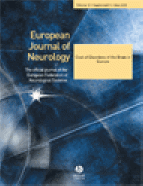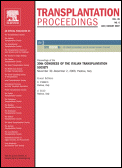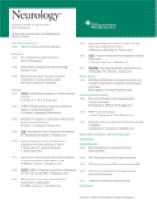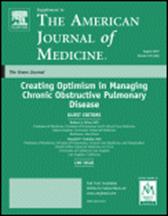|
Neurocritical care
Neurocrit
Care.2005,3(2):122-6
Brain death-associated reflexes and automatisms
Samay Jain1 and Michael DeGeorgia2
|
Division of Movement
Disorders, Neurological Institute, 710 W. 168th St.,
3rd Floor, 10032 New York, NY |
(1) |
|
Department of Neurology
and Neurosurgery, The Cleveland Clinic Foundation,
Cleveland, OH |
(2) |
Abstract Background:
In several instances, the diagnosis of brain death has been
questioned due to the presence of movements. This case
report and review of the literature illustrates the spectrum
of movements that have been encountered in brain death.
Methods: A case report and review
of the literature on movements seen in brain death was
conducted.
Results:
Movements in brain death
are common and have a wide range of phenomenology. Several
movements wax and wane over time, making movements in brain
death difficult to classify. In addition, varying
terminology has been used (e.g., Lazarus sign, spinal man,
spinal reflexes, spinal automatisms). Although evidence
points to a spinal origin for such movements, the pathophysiology in many cases remains speculative.
Characteristics of movements in brain death have been
identified that can help differentiate them from brainstem
or voluntary origin.
Conclusions: Based on our review,
we suggest referring to stimulus-provoked movements as
reflexes and spontaneous movements as automatisms.
We
propose using the terms brain death-associated reflexes and
brain death-associated automatisms as two main categories
for movements that occur in brain death.
These terms do not
imply a specific pathophysiology, but consistent clinically
oriented nomenclature may be useful when reporting such
phenomena.
__________________________________________________________
European Journal of Neurology

Eur J Neurol. 2004
Nov;11(11):723-7.
Undulating toe movements in brain death
Saposnik G,
Mauriño J,
Saizar R,
Bueri JA.
Movements in Brain Death Study
Group, Department of Neurology, Hospital JM Ramos Mejía,
Universidad de Buenos Aires, Buenos Aires, Argentina.
gsaposnik@yahoo.com
For many years, death implied
immobility. Nevertheless, there are anecdotal reports of
spontaneous or reflex movements (SRMs) in patients with
Brain death (BD). The presence of some movements can
preclude the diagnosis of BD, and consequently, the
possibility of organ donation for transplantation. McNair
and Meador [(1992), Mov Dord7: 345-347] described the
presence of undulating toe flexion movements (UTF) in BD
patients. UTF consists in a sequential brief plantar flexion
of the toes. Our aim was to determine the frequency,
characteristics and predisposing factors of UTF movements in
a prospective multicenter cohort study of patients with BD.
Patients with confirmed diagnosis of BD were assessed to
evaluate the presence of UTF using a standardized protocol.
All patients had a routine laboratory evaluation, CT scan of
the head, and EEG. Demographic, clinical, hemodynamic and
blood gas concentration factors were analyzed. amongst 107
BD patients who fulfilled the AAN requirements, 47 patients
(44%) had abnormal movements. UTF was observed in 25 (23%)
being the most common movement (53%). Early evaluation (OR
4.3, CI95% 1.5-11.9) was a predictor of UTF in a
multivariate regression model. The somato-sensory evoked
potential (SSEPs) as well as brainstem auditory evoked
potentials (BAEPs) did not elicit a cortical response in
studied patients with UTF. This spinal reflex is probably
integrated in the L5 and S1 segments of the spinal cord.
Abnormal movements are common in BD, being present in more
than 40% of individuals. UTF was the most common spinal
reflex. In our sample, early evaluation was a predictor of
UTF. Health care professionals, especially those involved in
organ procurement for transplantation, must be aware of this
sign. The presence of this motor phenomenon does not
preclude the diagnosis of BD.
__________________________________________________________
Transplantation Proceedings

Transplant Proc.2004 Jan-Feb,36(1):17-9
Frequency of spinal reflex movements in brain-dead
patients
Authors:
Dosemeci L.1; Cengiz
M.; Yilmaz M.; Ramazanoglu A.
Spontaneous and reflex movements may occur in brain-dead
patients. These movements originate from spinal cord neurons
and do not preclude a brain-death diagnosis. In this study,
we sought to
determine the frequency and characteristics of motor
movements in patients who fulfilled diagnostic criteria for
brain death. Patients admitted to our department
between January 2000 and March 2003 and diagnosed as
brain-dead were prospectively evaluated in terms of spinal
reflexes. Clinical brain death was diagnosed according to
our national law. We also prefer to document the diagnosis
of brain death with an EEG and/or TCD. Spinal reflex
movements were observed in 18 out of 134 (13.4%) brain-dead
patients during the study period.
Lazarus sign,
the most dramatic and complex movement seen in brain-dead
patients, was observed a few times in two
patients during an apnea test, an oculocephalic test, after
a painful stimulus, and after removal of a ventilator. The
other reflex movements observed in our
brain-dead patients
were finger and toe jerks, extension at arms and shoulders,
and flexion of arms and feet. The occurrence of spinal
reflexes in brain-dead patients may certainly delay decision
making, such as starting a transplantation procedure,
because of difficulties in convincing the family or even a
physician taking part in the diagnosis of brain death.
An awareness of spinal reflexes may prevent delays in and
misinterpretations of the brain-death diagnosis
__________________________________________________________

Acta Neurol Scand. 2003 Sep,108(3):170-3
Complex spinal reflexes during transcranial Doppler
ultrasound examination for the confirmation of brain death
Authors:
de
Freitas, G. R.1; Lima, M. A. S. D.1; André,
C.1
Abstract:
de
Freitas GR, Lima MASD, André C. Complex spinal reflexes
during transcranial Doppler ultrasound examination for the
confirmation of brain death.
Acta
Neurol Scand 2003: 108: 170-173. © Blackwell Munksgaard
2003. Objective -
Complex
sets of movements of the extremities can be seen in patients
with brain death (BD), and are typically observed during
apnea testing or removal of ventilatory support (also called
the Lazarus sign). We here describe brain-dead patients who
had not shown previous movements, even during apnea testing,
but presented complex spinal reflexes during transcranial
Doppler (TCD) examination elicited by neck flexion. Methods
-
We
performed a prospective TCD study of patients with the
clinical diagnosis of BD. Results -
Four
(2.5%) of 161
brain-dead patients presented complex spinal reflexes
exclusively during TCD examination. TCD showed
vertebro-basilar circulatory arrest in all four. Their
systolic blood pressure was significantly lower than that of
brain-dead patients not presenting movements during TCD
examination.
Conclusions :Hypotension
and mechanical stimulation play a role in the
pathophysiology of complex spinal reflexes present in BD,
which are not exclusively seen in terminal hypoxia.
Intensive care personnel and neurologists who perform TCD to
confirm BD should be aware of these movements.
__________________________________________________________
Journal of the American Academy of Neurology

Neurology 2000,54:221
Spontaneous Movements Often Occur After Brain
Death
Science Daily — ST.
PAUL, MN - Many
brain-dead patients have spontaneous movements such as
jerking of fingers or bending of toes that can be disturbing
to family members and health care professionals and even
cause them to question the brain-death diagnosis.
These movements occur in 39 percent of brain-dead patients,
according to a study published in the January 11 issue of
Neurology, the scientific journal of the American Academy of
Neurology.
"We found that these movements are more common than has been
reported or believed," said neurologist and study
author José Bueri, MD, of J. M. Ramos Mejia Hospital in
Buenos Aires, Argentina. "People need to know that these
movements are spinal reflexes that do not involve any brain
activity."
The
study examined all patients at the hospital during an
18-month period with a diagnosis of brain death. Of the 38
patients, 15 had these motor movements. In all cases, the
movements were seen in the first 24 hours after brain death
diagnosis, and no movements were seen after 72 hours.
Some of the movements occurred spontaneously; others were
triggered by touch. Examiners used tests designed to elicit
motor movements, such as lifting the arms or legs or
touching the palm of the hand.
Electroencephalogram (EEG) tests did not show any brain
activity in any of the patients with movements.
"If
the lack of understanding of these movements leads to a
delay in the brain death diagnosis or questions about the
diagnosis afterwards, there can be important practical and
legal implications, especially for organ procurement for
transplantation," Bueri said. "Family members and others
need to understand that these movements originate in the
spinal cord, not in the brain, and their presence does not
mean that there is brain activity.
One of the most
startling movements for family members and health care
professionals is called the 'Lazarus sign.' It is a sequence
of movements lasting for a few seconds that can occur in
some brain dead patients, either spontaneously or right
after the ventilator is disconnected," Bueri said. It is
named for the episode in the Bible where Lazarus is raised
from the dead.
"It starts with
stretching of the arms, followed by crossing or touching of
the arms on the chest, and finally falling of the arms
alongside the torso," he said. "It is also a spinal reflex,
but it can be disturbing to family members and others who
see this."
Another article in this issue of Neurology describes unusual
movements in two brain dead patients. The movements occurred
in a 30-year-old woman and an 11-month-old baby at a
hospital in Barcelona, Spain. Both
patients extended
their arms, flexed
their wrists and curled up their fingers each time the
mechanical ventilator inflated their lungs. The
movements stopped after the patients were disconnected from
the ventilator.
"We had never seen
these type of movements before, and they hadn't been
reported in the medical journals," said neurologist Joan
Martí-Fàbregas, MD, PhD, of the Hospital de la Santa Creu i
Sant Pau.
The
doctors conducted additional tests and confirmed that there
was no brain activity. "The living cells that were ordering
these muscles to move were not brain cells or brain stem
cells, but cells located in the spinal cord," he said. "It's
important for family members and health care professionals
to be aware of this possibility."
A
neurologist is a medical doctor with specialized training in
diagnosing, treating and managing disorders of the brain and
nervous system.
The
American Academy of Neurology, an association of more than
16,000 neurologists and neuroscience professionals, is
dedicated to improving patient care through education and
research .
__________________________________________________________
The American Journal of Medicine

Volume 118, Issue 3, March 2005, Pages 311-314
Spontaneous and reflex movements in brain
death
G. Saposnik, MD, J. A.
Bueri, MD, J. Mauriño, MD, R. Saizar, MD and N. S. Garretto,
MD
From the Department of
Neurology, Hospital J.M. Ramos Mejía, Buenos Aires,
Argentina.
Address correspondence and
reprint requests to Dr. José A. Bueri, Department of
Neurology, Hospital J.M. Ramos Mejía, Urquiza 609, Buenos
Aires (1221), Argentina.
Spontaneous and reflex movements may be found in patients
with brain death (BD). The authors prospectively
evaluated their frequency using a standardized
protocol. Among 38 patients who fulfilled
criteria for BD, the authors found 15 (39%) with spontaneous
or reflex movements. The most common movement was
finger jerks. Undulating toe flexion sign, triple
flexion response, Lazarus sign, pronation–extension
reflex, and facial myokymia also were seen.
These movements may be more common than reported
and do not preclude the diagnosis of BD.
__________________________________________________________

J Korean Med Sci 2006; 21: 588-90
ISSN 1011-8934
Reflex Movements in Patients with Brain
Death: A Prospective Study in A Tertiary Medical Center
Reflex movements have been reported to occur in up to 75% of
brain-dead patients,
but this issue has not been addressed in Korea. The patients
admitted to our hospital who met the criteria for brain
death were enrolled between March 2003 and February 2005.
The frequency and type of reflex movements in these patients
were evaluated prospectively using a standardized protocol.
Brain death was determined according to the guideline of
Korean Medical Association. Of 26 patients who were
included, five (19.2%) exhibited reflex movements such as
the pronation -
extension reflex, abdominal reflex, flexion reflex, the
Lazarus sign, and periodic leg movements. This
finding suggests that the frequency of spinal reflex
movements is not rare and the awareness of these movements
may prevent delays in brain-dead diagnosis and
misinterpretations .

(Ref PM4)__________________________________________________________
|